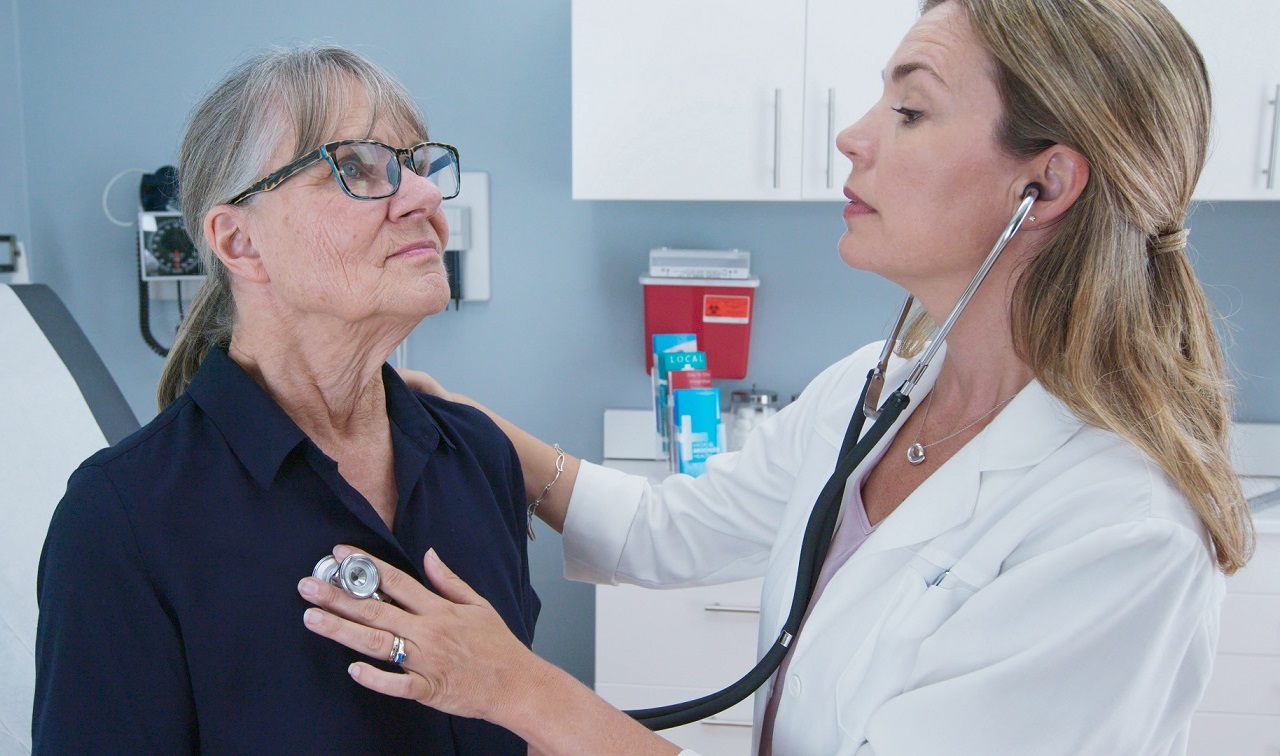Please send me a FREE Guide!

When a patient first learns that they will require supplemental oxygen to improve their breathing, they are likely to have many questions. Patients often wonder about how to get their oxygen and what steps they will need to complete in order to get the oxygen delivery device they need. If your doctor has recommended supplemental oxygen therapy to you, read on to learn more about where to go from here.

Although we all breathe oxygen, medical oxygen is highly concentrated and qualifies as a medical device. As such, the United States Food and Drug Administration (FDA) requires a prescription before you can obtain your supplemental oxygen. This helps ensure that you get a clear analysis of your oxygen requirements from a qualified medical professional along with the right oxygen delivery device for your needs.[1]
So, do you need a prescription for oxygen? The answer is yes, but let’s explore why you might receive that prescription.
Because every cell in your body relies on oxygen to function properly, a doctor will prescribe supplemental oxygen if they find that you are not getting sufficient oxygen on your own. You might receive your oxygen prescription from your primary care physician, a palliative care doctor or a pulmonologist. There are any number of specialty physicians who might determine that you are in need of medical oxygen. Oxygen therapy is prescribed for a number of different causes for breathing difficulties, including breathlessness, hypoxemia and hypoxia; therefore, the doctor that prescribes your oxygen therapy will likely be the doctor treating your present condition. Most often the prescribing doctor will be a pulmonary specialist since they specialize in diseases of the lungs and bronchial tubes.
In order to determine how much oxygen you are currently getting and, accordingly, how much supplemental oxygen you will need, your doctor will administer a number of tests to ascertain your oxygen level. These tests will likely include the following:
Once your doctor has determined your current oxygen levels, they will be able to list your low oxygen saturation levels as the cause for a medical oxygen prescription. They can then prescribe the correct amount of supplemental oxygen for your needs.
After your doctor has your oxygen saturation measurement and determines your oxygen needs, they will then be able to write your prescription for your supplemental oxygen therapy. Your prescription will state your oxygen level, along with other pertinent health information related to your particular condition that will help you move forward with getting the right oxygen delivery device for your needs.
If you wondered, “Do you need a prescription for oxygen?” the answer is clear. Yes, you do. As noted, there are strict criteria for oxygen therapy. Your doctor must provide proof that they recently examined you, along with a detailed diagnosis, explanation of why you require supplemental oxygen and a prescription for your oxygen use, which includes information regarding your flow rate, duration and frequency of use and duration of need.[3]
It can be helpful to understand what your prescription should include, as it will provide you and your oxygen supplier with the information necessary to choose the right oxygen delivery device. If you will be using insurance coverage, they will also require certain information. Because your oxygen prescription is essential for maintaining safe oxygen levels for you and will be required by your oxygen provider, as well as in other situations during travel, review it carefully and ask your doctor any questions that may arise. Your prescription should include this information:[3]
Ask your doctor to review your oxygen prescription with you so that you are certain you understand how and when to use your supplemental oxygen, as well as ensuring that you have all the information necessary.
Choosing the right oxygen delivery device for your needs requires that you know a few things about how you will use your supplemental oxygen for your oxygen therapy. Before you and your doctor discuss which oxygen delivery device is right for you, they should tell you:
Your doctor will give you all of this information with your oxygen prescription, and they can also guide you toward the choices that will fulfill your oxygen needs. Your options include compressed oxygen tanks, liquid oxygen tanks and oxygen concentrators.[4]
From there, you should talk to your doctor about the pros and cons of each of your options, making sure to include your preferences, too. If you are discussing both oxygen tanks and oxygen concentrators, you may have particular concerns about portability, ease of travel, ease of refilling or replacing tanks, total oxygen capacity and more. Be open and honest about any concerns you have so that your doctor can help you make the right choice for your life.
In most cases, your choices will be narrowed for you based on your particular needs from your oxygen delivery device. Depending on the flow rate, dosing and times you will need to use oxygen therapy, some options may not work for you. However, generally speaking, there are some pros and cons you should consider when it comes to oxygen tanks versus oxygen concentrators. Before making your final decision, consider the following:[5]
Pros:
Cons:
Pros
Cons
When you are getting your oxygen prescription from your doctor, make sure you are clear about how each oxygen delivery device could impact your life. Supplemental oxygen is intended to improve your health, but it should not make your life worse. Make sure that you choose the oxygen delivery device that will not only give you the oxygen you need, but will also help improve your overall quality of life.
Many people who need supplemental oxygen live normal, active lives. In many cases, the oxygen therapy helps make activity easier, increases stamina, and decreases shortness of breath. [6] Attempting to drag around a heavy metal tank is difficult, and it makes leaving the house, or even moving from room to room, a chore. A portable oxygen concentrator is designed to reduce that impact, allowing patients to go about their daily lives more easily, even while receiving their oxygen therapy. [5] With a portable oxygen concentrator, like the lightweight models from innovators at, patients experience peace of mind when outside their home and away from their stationary concentrator.
So, you do need a prescription for oxygen concentrator use. You will also need a prescription that specifies the need for a portable oxygen concentrator if you want Medicare or insurance to cover any costs for you. In order to qualify for Medicare or insurance coverage, you will need your doctor to provide evidence in your oxygen prescription that a portable oxygen concentrator is necessary for you. In order to qualify for Medicare or insurance coverage, you will need your doctor to provide evidence in your oxygen prescription that a portable oxygen concentrator is necessary for you. For more information on qualifying for Medicare coverage, call Inogen today at 1-855-694-6643 to learn more and allow us to guide you through the process.
Contact Customer Support at Inogen any time for additional information on getting your oxygen prescription, purchasing your portable oxygen concentrator or for any other information about oxygen therapy. Discover today how a prescription for a portable oxygen concentrator can help improve your breathing and possibly your life .
Please send me a FREE Guide!
